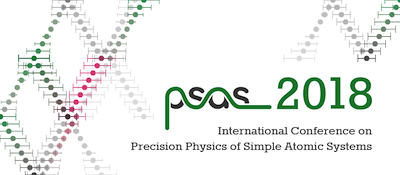Speaker
Description
Cold molecular ions prepared by sympathetic cooling with laser-cooled atomic ions in an ion trap represent attractive systems for new spectroscopic experiments. The long trapping times (up to hours) and state lifetimes (up to minutes) [1,2] in an almost perturbation-free environment enable the long interaction times required for the study of “forbidden” spectroscopic transitions which have not been accessible before in molecular ions.
Here, we report the first direct observation of electric-dipole-forbidden, quadrupole- allowed infrared transitions in a molecular ion (N2+ in our case) [3], more than 60 years after such transitions have first been observed in a neutral molecule. The detection of these extremely weak transitions was enabled through a combination of the state-selective preparation of the molecular ions, their sympathetic cooling into the near-perturbation-free environment of a Coulomb crystal and the application of a highly sensitive charge-transfer detection scheme. The observed transitions in molecular ions can exhibit very small natural linewidths, rendering them ideal for spectroscopic precision experiments [4].

